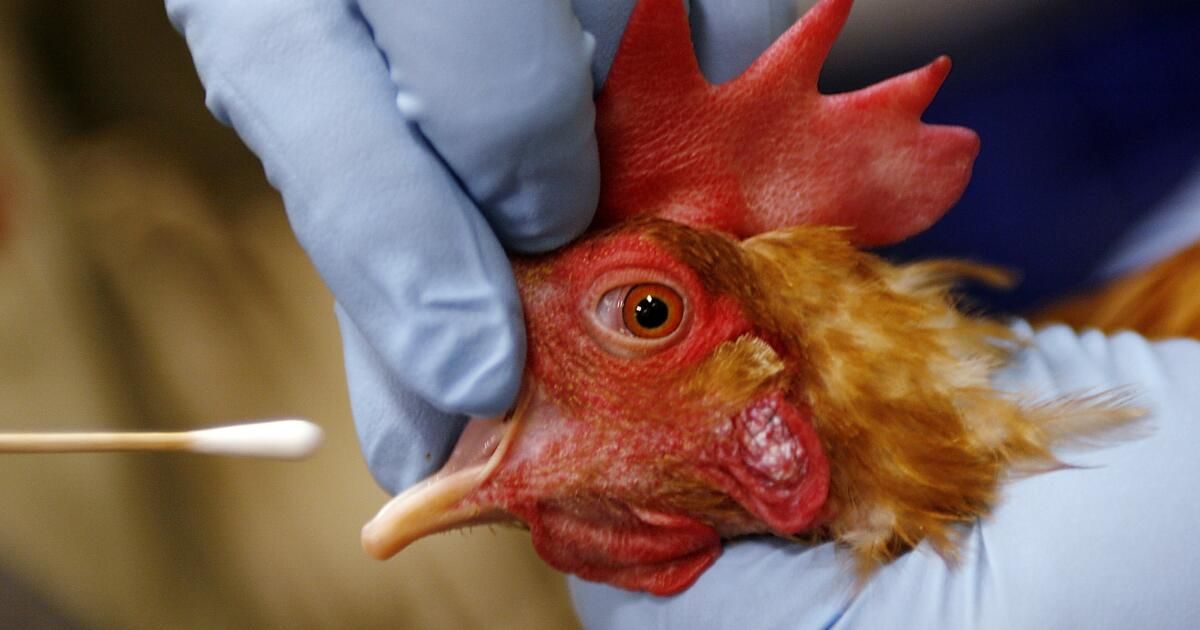There is an outbreak of bird flu. Here's what you need to know about it:
What is bird flu?
Avian influenza is what is known as highly pathogenic avian influenza virus. The “highly pathogenic” part refers to birds, which the virus is quite adept at killing. In virology, the virus is of the Influenza A type and is called H5N1. The “H” represents the protein hemagglutinin (HA), of which there are 16 subtypes (H1-H16). The “N” is the abbreviation for Neuraminidase (NA), of which there are 9 subtypes (N1-N9). There are many possible combinations of HA and NA proteins. The two known human influenza A viruses are H1N1 and H3N2. (Two additional subtypes, H17N10 and H18N11, have been identified in bats.)
When did this bird flu first appear?
The current strain of H5N1 circulating around the world originated in 1996, in farmed geese living in China's Guangdong province. It quickly spread to other poultry and migratory birds. By the early 2000s, it had spread across South Asia. In 2005, it was observed in the Middle East, Africa and Europe. In 2014, it appeared in North America, but seemed to fade away here while still raging in Europe, the Middle East, and Africa. In 2021, it appeared in wild birds migrating off the Atlantic coast of Canada. Since then, it has spread throughout North and South America.
What type of animals does avian flu affect?
Birds are the main carriers and victims of the virus. Around the world, hundreds of millions of domestic and wild birds have died. Since 2021, hundreds of American poultry farms have had to “depopulate” millions of birds after becoming infected, presumably by sick migratory wild birds. The virus is highly contagious among birds and has a mortality rate of almost 100%. Mammals have also been infected and died. In most cases, these are scavengers or predators that ate sick birds, and the virus has died in these animals and does not become contagious between them. So far, 48 species of mammals have been infected. However, there have been some cases where it appears the virus may have spread among mammals, including on European fur farms, on some South American beaches where elephant seals came to rest, and now among dairy cattle in the United States. .
Can humans get bird flu?
Since 2003, when the virus began spreading through South Asia, 868 cases of human infection with H5N1 have been reported, of which 457 were fatal, a case fatality rate of 53%. There have only been two cases in the U.S. In 2022, a poultry worker was infected in Colorado and suffered only mild symptoms, including fatigue. In 2024, a dairy worker was infected in Texas and only complained of conjunctivitis or conjunctivitis.
Why does everyone pay attention to dairy cows?
On March 25, 2024, authorities announced that Texas dairy cows had been infected with bird flu. Since then, the virus has been found in 36 herds in nine states. There are no known cases in California. There is believed to have been a single introduction of the virus through exposure to wild birds (either through passive exposure or perhaps by eating contaminated feed), which likely occurred in December in Texas. The virus has since been detected in milk. A study by federal researchers found that 1 in 5 milk samples collected at retail stores had the virus. It is believed that the virus may be transmitting between cows and that there may be cows that do not show symptoms. For the most part, dairy cows appear to only suffer mild illness when they become infected and milk production declines. They eliminate the virus after a few weeks.
Is it safe to drink milk?
Yes, if it is pasteurized milk. Federal officials say the virus they have detected in samples of pasteurized milk is inactive and will not cause illness. In the case of raw milk, they urge you to avoid it. This is because they found high viral loads in raw milk samples. Additionally, studies of barn cats that have consumed raw milk have reported serious consequences. In a group of 24 barn cats, half of them died after consuming raw milk, and others suffered blindness, neurological problems, and profuse nasal discharge. The virus has not been found in sour cream or cottage cheese.
What is the situation with wastewater?
As health officials and researchers struggle to understand how widespread bird flu is in livestock and the environment, they are analyzing municipal wastewater. A team from Emory University and Stanford University examined 190 wastewater treatment sites in 41 states. They found an increase in influenza A virus in recent weeks in 59 sites. This does not necessarily mean that there is bird flu in these places. However, in the places the team went to investigate, including three in Texas where they knew H5N1 was present in dairy cattle, they found bird flu. Influenza A is generally seasonal in humans, peaking from late fall to early spring. The increase that researchers noted, including at several sites in California, began after the flu season had ended. Researchers in Texas also detected H5N1 in wastewater from nine of the 10 cities they analyzed, all located in Texas. CDC is also monitoring influenza A at approximately 600 sites across the country.












